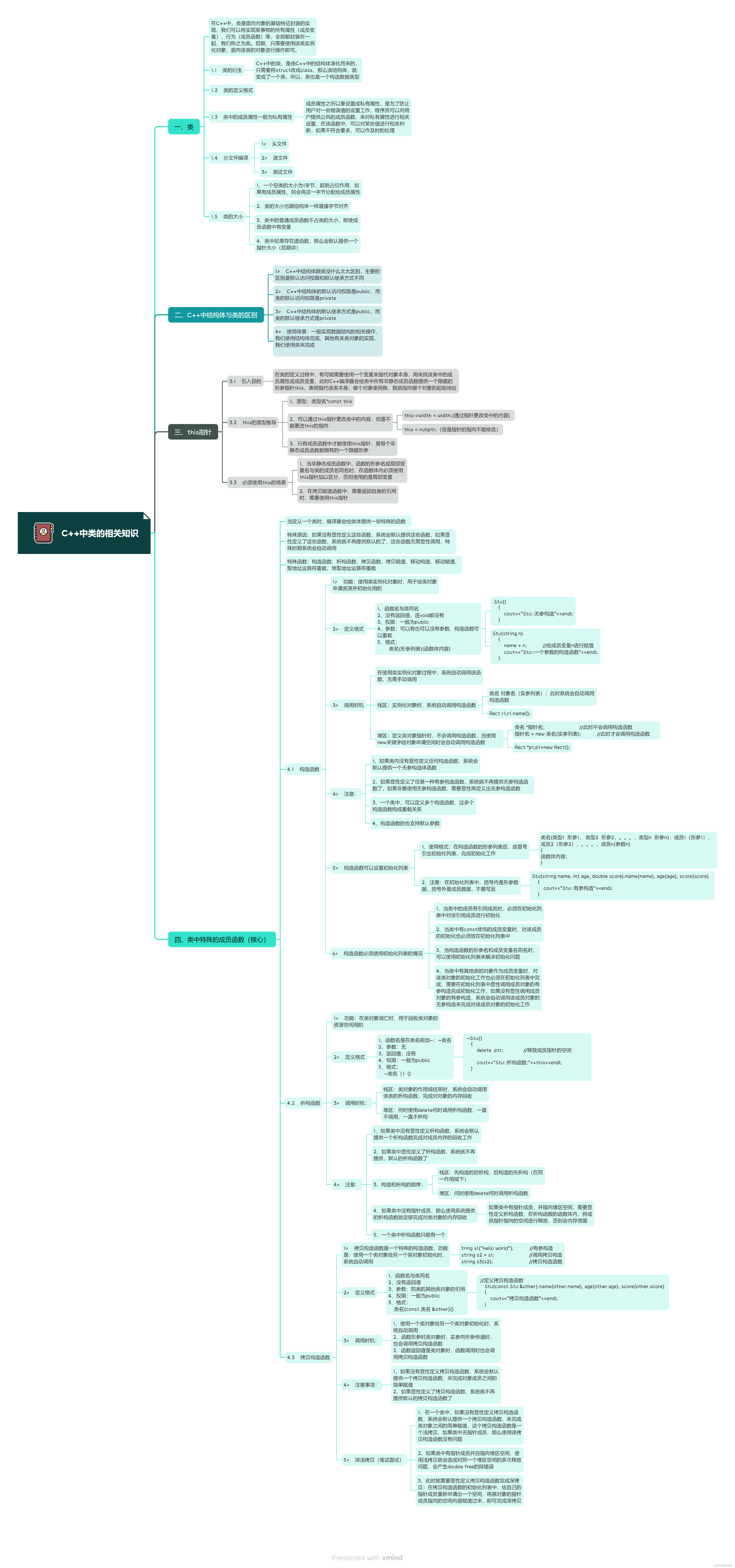
✅✅✅✅✅✅✅✅✅✅✅✅✅✅✅✅
✨✨✨✨✨✨✨✨✨✨✨✨✨✨✨✨
🌿🌿🌿🌿🌿🌿🌿🌿🌿🌿🌿🌿🌿🌿🌿🌿
🌟🌟🌟🌟🌟🌟🌟🌟🌟🌟🌟🌟🌟🌟🌟🌟
🌟🌟 追风赶月莫停留 🌟🌟
🍀🍀🍀🍀🍀🍀🍀🍀🍀🍀🍀🍀🍀🍀🍀🍀
🌟🌟 平芜尽处是春山🌟🌟
🌟🌟🌟🌟🌟🌟🌟🌟🌟🌟🌟🌟🌟🌟🌟🌟
🌿🌿🌿🌿🌿🌿🌿🌿🌿🌿🌿🌿🌿🌿🌿🌿
✨✨✨✨✨✨✨✨✨✨✨✨✨✨✨✨
✅✅✅✅✅✅✅✅✅✅✅✅✅✅✅✅
🍑栈
🍍栈的含义
栈是一种特殊类型的线性表,它的特点是仅允许在其一端进行插入(压入)和删除(弹出)操作。这一端被称为栈顶,而相对的另一端则被称为栈底。栈通常遵循“后进先出”(LIFO)的原则,意味着新加入的元素总是位于栈顶,而要访问或移除的元素必须从前部移除。
🍍栈的结构

栈的结构就是如图片中的形容的类似,满足先进后出
🍍栈的实现
🍌栈的补充条件
#include<stdio.h>
#include<stdlib.h>
#include<assert.h>
#include<stdbool.h>
typedef int STDatetype;//方便后续数据不只是int,也可以方便的换其他类型
typedef struct Stack//利用结构体来定义栈
{
STDatetype* a;
int top;
int capacity;
}ST;
int main()
{
ST st;
STInia(&st);
STPush(&st, 1);
STPush(&st, 2);
STPush(&st, 3);
STPush(&st, 4);
STPush(&st, 5);
while (!STEmpty(&st))
{
printf("%d ", STTop(&st));
STPop(&st);
}
printf("\n");
STDestroy(&st);
return 0;
}
🍌初始化栈
void STInia(ST* ps)
{
assert(ps);
ps->top = ps->capacity = 0;
ps->a = NULL;
}
🍌入栈
void STPush(ST* ps, STDatetype x)
{
assert(ps);
if (ps->top == ps->capacity)
{
int newcapacity = 0;
if (ps->capacity == 0)
{
newcapacity = 2;
}
else
{
newcapacity = newcapacity * 2;
}
STDatetype* tem = (STDatetype*)realloc(ps->a, sizeof(STDatetype) * newcapacity);
if (tem == NULL)
{
perror("realloc fail");
exit(-1);
}
ps->a = tem;
ps->capacity = newcapacity;
}
ps->a[ps->top] = x;
ps->top++;
}
(1)之所以在这里不用malloc创建空间,是因为后面还要用realloc进行扩容,所以就直接用realloc进行空间的创建。
(2)在ps->top和ps->capacity相等时进行扩容,在这里进行了判断,有两种情况。第一种是ps->capacity等于0,那就得先创建空间。第二种是ps->capacity不为0,就直接扩容为原来2倍的空间
🍌出栈
void STPop(ST* ps)
{
assert(ps);
assert(ps->top > 0);//判断数据是否为空
(ps->top)--;
}
🍌获取栈顶元素
STDatetype STTop(ST* ps)
{
assert(ps);
assert(ps->top > 0);//判断是否为空
return ps->a[ps->top - 1];
}
🍌获取栈中有效元素的个数
int STSize(ST* ps)
{
assert(ps);
return ps->top;
}
在栈中数据个数其实就是ps->top
🍌检查栈是否为空
bool STEmpty(ST* ps)
{
assert(ps);
return ps->top == 0;
}
如果为空就返回1,不为空就返回0
🍌销毁栈
void STDestroy(ST* ps)
{
assert(ps);
free(ps->a);
ps->a = NULL;
ps->top = ps->capacity = 0;
}
🍍栈的整体代码的实现
#include<stdio.h>
#include<stdlib.h>
#include<assert.h>
#include<stdbool.h>
typedef int STDatetype;
typedef struct Stack
{
STDatetype* a;
int top;
int capacity;
}ST;
void STInia(ST* ps)
{
assert(ps);
ps->top = ps->capacity = 0;
ps->a = NULL;
}
void STDestroy(ST* ps)
{
assert(ps);
free(ps->a);
ps->a = NULL;
ps->top = ps->capacity = 0;
}
void STPush(ST* ps, STDatetype x)
{
assert(ps);
if (ps->top == ps->capacity)
{
int newcapacity = 0;
if (ps->capacity == 0)
{
newcapacity = 2;
}
else
{
newcapacity = ps->capacity * 2;
}
STDatetype* tem = (STDatetype*)realloc(ps->a, sizeof(STDatetype) * newcapacity);
if (tem == NULL)
{
perror("realloc fail");
exit(-1);
}
ps->a = tem;
ps->capacity = newcapacity;
}
ps->a[ps->top] = x;
(ps->top)++;
}
void STPop(ST* ps)
{
assert(ps);
assert(ps->top > 0);
(ps->top)--;
}
int STSize(ST* ps)
{
assert(ps);
return ps->top;
}
bool STEmpty(ST* ps)
{
assert(ps);
return ps->top == 0;
}
STDatetype STTop(ST* ps)
{
assert(ps);
assert(ps->top > 0);
return ps->a[ps->top - 1];
}
int main()
{
ST st;
STInia(&st);
STPush(&st, 1);
STPush(&st, 2);
STPush(&st, 3);
STPush(&st, 4);
STPush(&st, 5);
while (!STEmpty(&st))
{
printf("%d ", STTop(&st));
STPop(&st);
}
printf("\n");
STDestroy(&st);
return 0;
}
🍑队列
🍍队列的含义
队列是一种特殊的线性表,特殊之处在于它只允许在表的前端(front)进行删除操作,而在表的后端(rear)进行插入操作,和栈一样,队列是一种操作受限制的线性表。进行插入操作的端称为队尾,进行删除操作的端称为队头。
🍍队列的结构

队列和栈有点类似,只不过栈是先进后出,而队列是先进先出
🍍队列的实现
🍌队列的补充条件
#include<stdio.h>
#include<stdlib.h>
#include<assert.h>
#include<stdbool.h>
typedef int QDatetype;
typedef struct QueueNode
{
struct QueueNode* next;
QDatetype date;
}QNode;
typedef struct Queue
{
QNode* head;
QNode* tail;
int size;
}Que;
///
int main()
{
Que qq;
QueueInia(&qq);
QueuePush(&qq, 1);
QueuePush(&qq, 2);
QueuePush(&qq, 3);
QueuePush(&qq, 4);
while (!QueueEmpty(&qq))
{
printf("%d ", QueueFront(&qq));
QueuePop(&qq);
}
printf("\n");
return 0;
}
在这个队列中,我是采用了单链表(单向不循环)的结构来实现队列,所以再这里要注意头可能是空指针的问题,在前面我介绍单链表的时候是利用二级指针解决这个问题,而在这里是采用了新的方法,也就是结构体指针,把头和尾重新用一个结构体来定义
🍌初始化队列
void QueueInia(Que* ps)
{
assert(ps);
ps->head = NULL;
ps->tail = NULL;
ps->size = 0;
}
🍌队尾入队列
void QueuePush(Que* ps, QDatetype x)
{
assert(ps);
QNode* newnode = (QNode*)malloc(sizeof(QNode));
if (newnode == NULL)
{
perror("malloc fail");
exit(-1);
}
newnode->next = NULL;
newnode->date = x;
if (ps->tail == NULL)
{
ps->head = ps->tail = newnode;
}
else
{
ps->tail->next = newnode;
ps->tail = newnode;
}
(ps->size)++;
}
🍌队头出队列
void QueuePop(Que* ps)
{
assert(ps);
assert(ps->size > 0);
if (ps->head->next == NULL)
{
free(ps->head);
ps->head = ps->tail = NULL;
}
else
{
QNode* cur = ps->head->next;
free(ps->head);
ps->head = cur;
}
(ps->size)--;
}
🍌获取队列头部元素
QDatetype QueueFront(Que* ps)
{
assert(ps);
assert(!QueueEmpty(ps));
return ps->head->date;
}
🍌获取队列队尾元素
QDatetype QueueBake(Que* ps)
{
assert(ps);
assert(!QueueEmpty(ps));
return ps->tail->date;
}
🍌获取队列中有效元素个数
int QueueSize(Que* ps)
{
assert(ps);
return ps->size;
}
🍌检测队列是否为空
bool QueueEmpty(Que* ps)
{
assert(ps);
return ps->head == NULL;
}
🍌 销毁队列
void QueueDestroy(Que* ps)
{
assert(ps);
QNode* cur = ps->head;
while (cur)
{
QNode* next = cur->next;
free(cur);
cur = next;
}
ps->head = ps->tail = NULL;
ps->size = 0;
}
🍍队列的整体代码的实现
#include<stdio.h>
#include<stdlib.h>
#include<assert.h>
#include<stdbool.h>
typedef int QDatetype;
typedef struct QueueNode
{
struct QueueNode* next;
QDatetype date;
}QNode;
typedef struct Queue
{
QNode* head;
QNode* tail;
int size;
}Que;
void QueueInia(Que* ps)
{
assert(ps);
ps->head = NULL;
ps->tail = NULL;
ps->size = 0;
}
bool QueueEmpty(Que* ps)
{
assert(ps);
return ps->head == NULL;
}
void QueuePush(Que* ps, QDatetype x)
{
assert(ps);
QNode* newnode = (QNode*)malloc(sizeof(QNode));
if (newnode == NULL)
{
perror("malloc fail");
exit(-1);
}
newnode->next = NULL;
newnode->date = x;
if (ps->tail == NULL)
{
ps->head = ps->tail = newnode;
}
else
{
ps->tail->next = newnode;
ps->tail = newnode;
}
(ps->size)++;
}
void QueuePop(Que* ps)
{
assert(ps);
assert(ps->size > 0);
if (ps->head->next == NULL)
{
free(ps->head);
ps->head = ps->tail = NULL;
}
else
{
QNode* cur = ps->head->next;
free(ps->head);
ps->head = cur;
}
(ps->size)--;
}
QDatetype QueueFront(Que* ps)
{
assert(ps);
assert(!QueueEmpty(ps));
return ps->head->date;
}
QDatetype QueueBake(Que* ps)
{
assert(ps);
assert(!QueueEmpty(ps));
return ps->tail->date;
}
int QueueSize(Que* ps)
{
assert(ps);
return ps->size;
}
void QueueDestroy(Que* ps)
{
assert(ps);
QNode* cur = ps->head;
while (cur)
{
QNode* next = cur->next;
free(cur);
cur = next;
}
ps->head = ps->tail = NULL;
ps->size = 0;
}
int main()
{
Que qq;
QueueInia(&qq);
QueuePush(&qq, 1);
QueuePush(&qq, 2);
QueuePush(&qq, 3);
QueuePush(&qq, 4);
while (!QueueEmpty(&qq))
{
printf("%d ", QueueFront(&qq));
QueuePop(&qq);
}
printf("\n");
return 0;
}
队列和栈我就不详细介绍了,如果有需要可以看我写的这篇博客:单链表
本期的内容就结束了,文章有错误的地方欢迎大家指正!!!文章来源:https://www.toymoban.com/news/detail-833916.html
 文章来源地址https://www.toymoban.com/news/detail-833916.html
文章来源地址https://www.toymoban.com/news/detail-833916.html
到了这里,关于栈和队列的动态实现(C语言实现)的文章就介绍完了。如果您还想了解更多内容,请在右上角搜索TOY模板网以前的文章或继续浏览下面的相关文章,希望大家以后多多支持TOY模板网!













